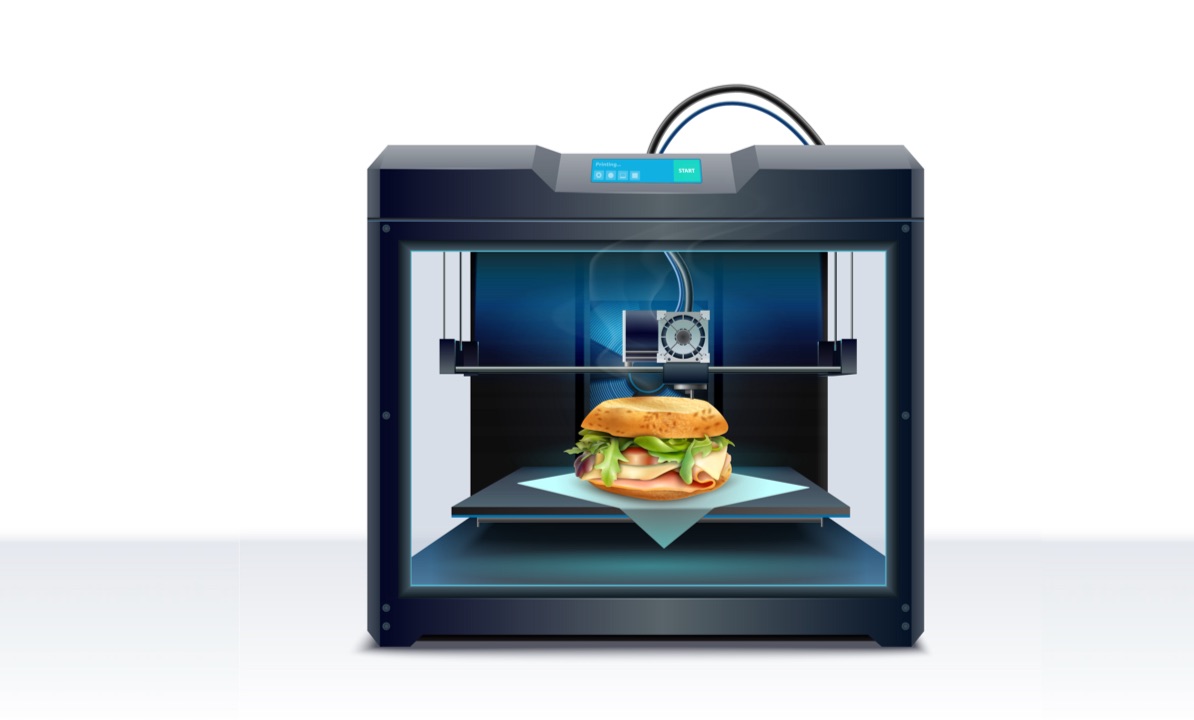3D printing has revolutionized various industries, from healthcare to automotive. Now, it is also entering the food sector. Several companies are implementing this technology, which promises to disrupt traditional food industries while addressing critical global challenges such as food waste and climate change.
3D food printing involves the use of edible ingredients (called food “inks”). Those inks can range from pureed vegetables, chocolate, or dough, which can be used to make complex products that mimic meat or dairy foods. This technology further allows for precise control over the composition, shape, and texture of food.
This technology has been already implemented by several companies. The top three pioneering 3D food printing companies are the following:
- Redefine Meat is a startup focusing on plant-based meat alternatives. They use 3D printing technology to create meat-like textures and structures, producing realistic steaks and other meat substitutes without animal products.
- Natural Machines, a Spanish company, developed a 3D food printer called Foodini. This machine focuses on healthy, customizable meals. It can print anything from pizza to desserts, allowing chefs and home cooks to create visually stunning dishes with nutritional precision.
- Barilla, the world-leading pasta company, is experimenting with 3D-printed pasta shapes that go beyond traditional designs. Their approach could change how we experience and consume pasta in terms of flavor and appearance.
Some of the main advantages of 3D printing is its ability to reduce food waste. The technology can use ingredients that would otherwise be discarded—such as food scraps or less aesthetically pleasing produce—and turn them into delicious, nutritious meals. This approach can lead to more efficient use of resources and significantly cut down on food waste. Moreover, using alternative ingredients such as plant-based proteins or lab-grown materials has the potential to reduce the environmental footprint of food production. For example, companies like Redefine Meat aim to lower the demand for livestock farming, which is responsible for a significant portion of global greenhouse gas emissions.
Competition in the market
The market for 3D food printing is still in its early stages, with a few key players leading the way. Nevertheless, traditional food manufacturers are also paying attention. Giants like Nestlé and Unilever are investing in food innovation, including 3D printing and lab-grown alternatives. However, the challenges of cost and scalability still pose obstacles. Printing food is currently more expensive than traditional manufacturing processes, and it may take years for 3D food printing to become mainstream. Hopefully, as the technology grows, costs are expected to decrease, making this innovation accessible to a wider audience.
Personal Reflection
The possibilities of 3D food printing are vast, offering sustainable and customizable solutions for the future of food production. By reducing food waste, minimizing environmental impact, and creating new business opportunities, it has the potential to revolutionize the food industry. Companies leading the way are already showing the potential of this technology, but the real breakthrough will come as it scales, becoming more accessible and affordable for everyday use.
As a vegan consumer, I believe 3D-printed food can be the best solution to accommodate all dietary requirements, making sure that the food we are eating is highly nutritious, tasty, and “customizable”. 3D food printing may soon become a common feature in professional kitchens, homes, and even space missions. It is not just about convenience, it is about reshaping how we think about food itself.
Sources
A. Katsnelson, (2024). American Chemical Society. 3D printed foods. ChemMatters https://www.acs.org/education/chemmatters/articles/3d-printed-foods.html
3Dnatives. (2022, June 13). Barilla’s 3D printed pasta is now for sale. 3Dnatives. https://www.3dnatives.com/en/barillas-3d-printed-pasta-for-sale-130620224/
TNO. (2021). Future of 3D printed food. TNO. Retrieved September 18, 2024, from https://www.tno.nl/en/healthy/flexibele-en-vrije-vorm-producten/future-3d-printed-food/


This is a fascinating read! I had no idea 3D printing technology was being used in the food industry before. I love the idea of 3D food printing reducing food waste and providing sustainable options like plant-based meats. However, I wonder how accessible this technology will be in the near future, especially for everyday consumers. The current cost seems like a major hurdle, but hopefully, with advancements, it becomes more affordable. I can see how this technology could cater to various dietary needs, which is exciting. It’s a step toward a greener food industry, but I’m curious to see how it scales and whether traditional food companies will fully embrace it.